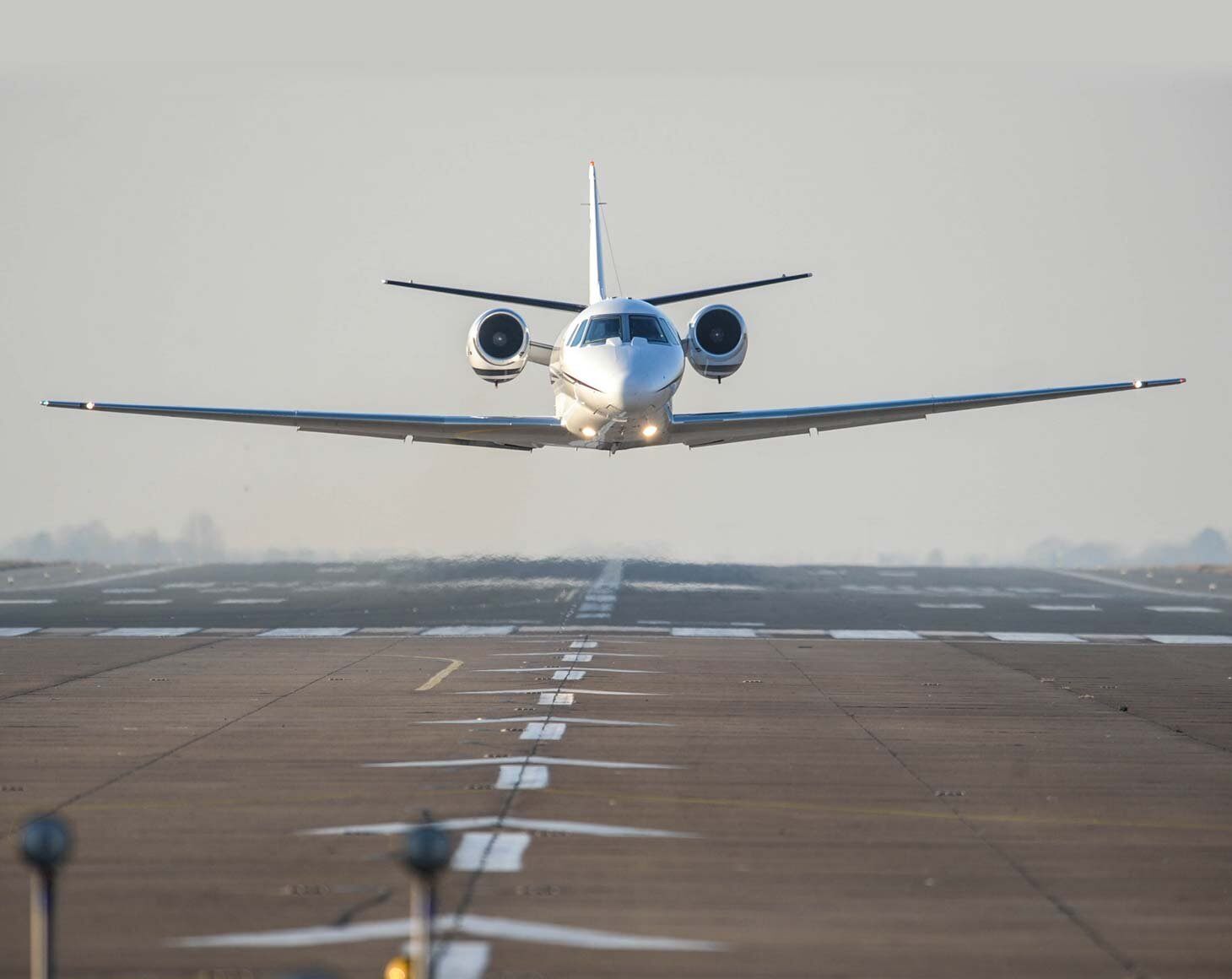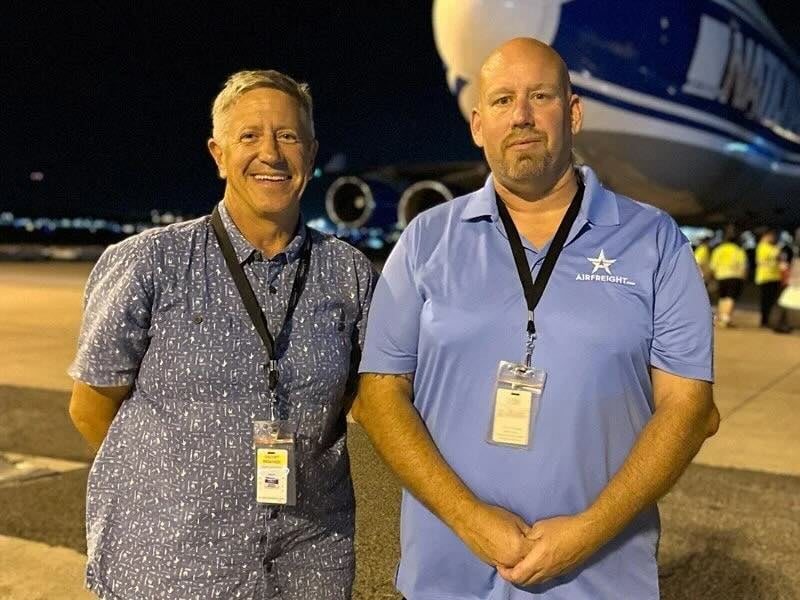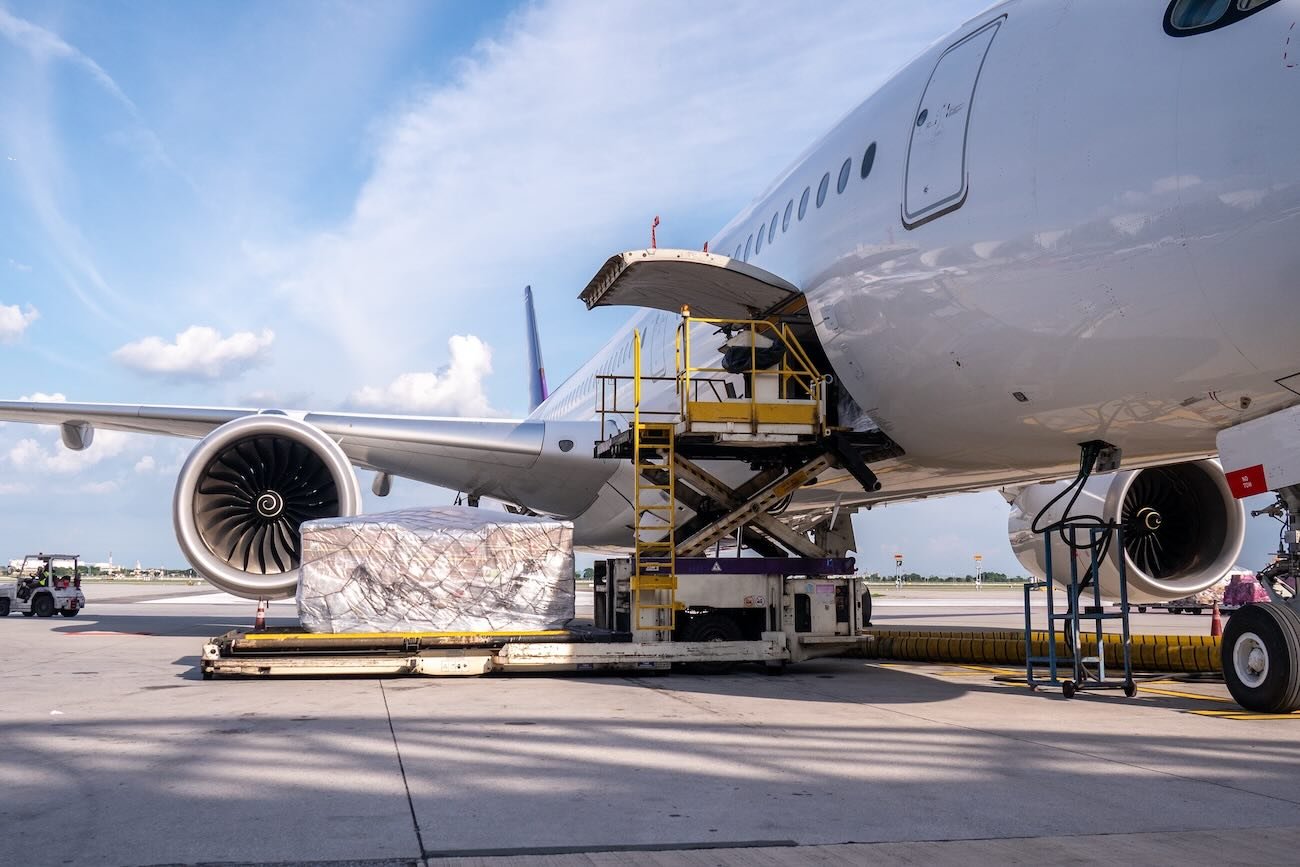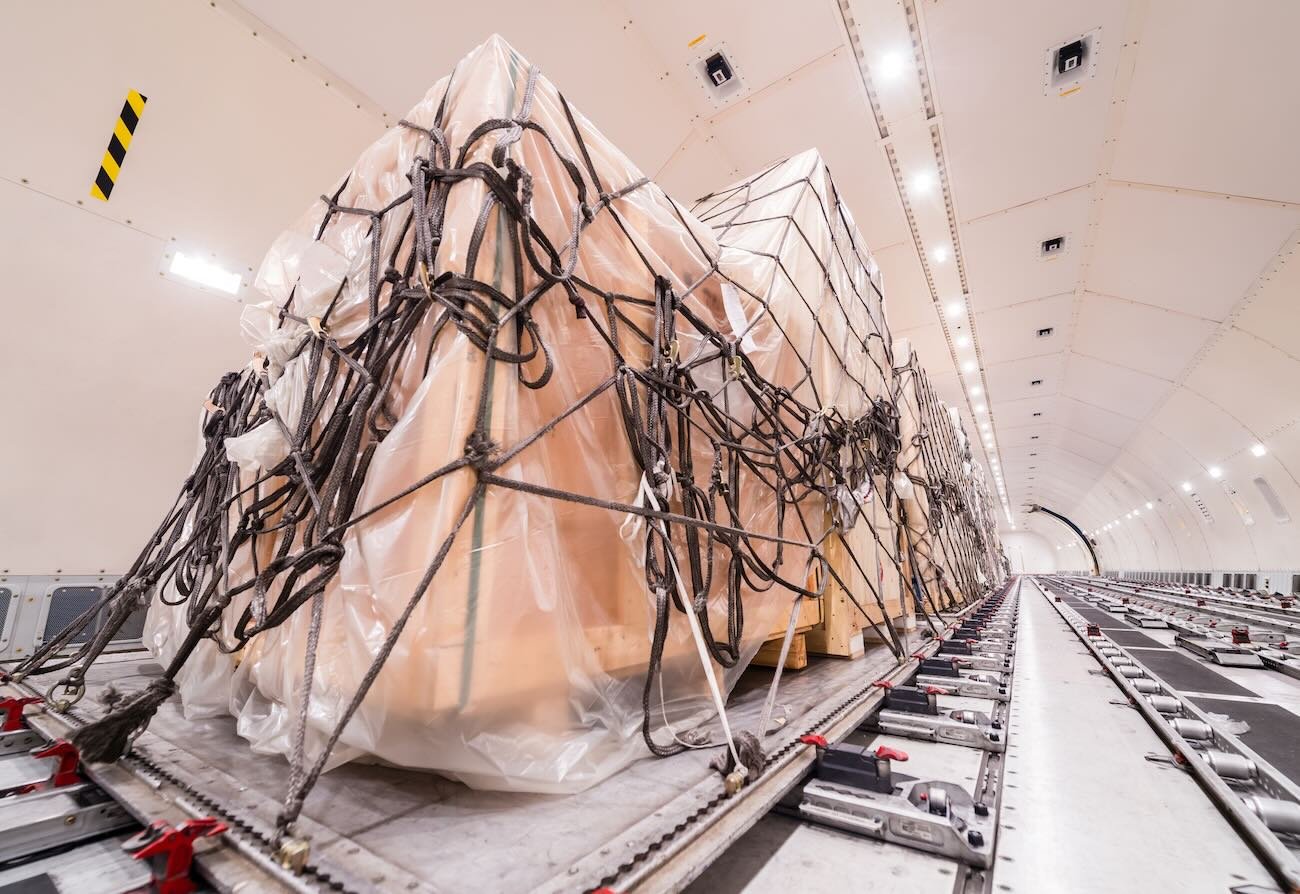An aircraft charter is the on-demand, non-scheduled rental of an entire aircraft – whether for passenger transport, cargo delivery, or specialized missions. Instead of buying individual tickets on an airline schedule, customers rent a whole plane (and crew) for their chosen dates and route.
Air charter services offer a high degree of flexibility and convenience, allowing clients to bypass the rigid schedules and crowded terminals associated with commercial airlines. This makes them especially appealing to business executives, high-net-worth individuals, government officials, and others who value privacy, time efficiency, and tailored travel experiences. Charter flights can operate from a wide range of airports, including smaller regional hubs not served by major airlines, which often results in faster and more direct travel.
The aircraft used for charters vary widely, ranging from small turboprops and private jets to large cargo planes and VIP-configured airliners. Operators can accommodate a variety of needs, from short domestic hops to intercontinental flights, and from urgent medical evacuations to luxury vacations. Because charters are arranged on a case-by-case basis, clients can customize nearly every aspect of the journey, including flight times and in-flight services, making it a highly personalized form of air travel.
AIR CHARTER MARKET SIZE AND GROWTH
Globally, the air charter services market is substantial and growing. By 2024 it was estimated at roughly USD 32 billion in annual revenue, and industry analysts project about 5–6% annual growth through the next decade. Corporate and private travel currently make up the largest share of this market (nearly half of charter flights cater to business or VIP travel). Meanwhile, specialized niches like medical air charters (emergency patient transfers, organ transport) are among the fastest-growing segments as healthcare needs expand.
Overall, the industry is structured around certified operators supplying aircraft and crews, brokers providing customer connections, and a fleet that ranges from light jets to large freighters, all supporting a growing global market.
TALK TO AN EXPEDITOR NOW
Get a Quote in Minutes for Your Time-Critical Freight Needs
Typical Air Charter Process
The shipper prepares the freight according to air cargo standards. This may involve shrink-wrapping pallets, labeling hazardous materials, securing temperature-sensitive packaging, and palletizing. Ground handlers (or the shipper’s team) ensure the cargo is ready at the departure airport, coordinating with the charter’s flight-support staff.
On the appointed day/time, the aircraft takes off, often with priority handling (e.g. quicker taxi, direct routing). En route, the flight may stop to refuel if needed. Throughout the flight, the shipper’s team typically monitors progress. Because it’s a charter, there are minimal ground-to-ground transfers – cargo typically stays on the same plane from origin to destination.
Upon arrival, the cargo is offloaded immediately (often via ground handling equipment staged in advance). If customs or inspections are needed, the charter provider’s staff assist. Finally, the freight is handed over to the consignee or ground transport for final delivery to the end location.
Types of Air Charter Services
- Private/Corporate Charters: Business travelers, VIPs, and groups rent passenger jets (from light turboprops to long-range business jets) for meetings, events, or confidential travel on short notice.
- Cargo Charters: Entire freighter or passenger aircraft are hired to ship goods. Time-sensitive or oversized freight – from medical supplies and electronics to automotive parts – can be flown quickly by cargo charter to meet tight deadlines.
- Medical (Air Ambulance) Charters: Airplanes equipped for medical care, with flight crews and paramedics, transport patients or organs under specialized protocols. These flights provide life-critical transport when commercial options aren’t viable.
- ACMI (Wet-Lease) Charters: In this model, one company (the lessor) provides Aircraft, Crew, Maintenance, and Insurance to another (the lessee), who pays for fuel and other costs. It’s often used by airlines or logistics firms to quickly expand capacity with a fully crewed aircraft on short-term needs. All these charters share the core idea of renting an entire plane on demand, offering flexibility beyond scheduled airline service.
Why Charter an Aircraft?
Chartering an aircraft offers logistics professionals and shippers unparalleled speed, flexibility, and control compared to traditional freight options. In industries where time-sensitive deliveries are critical—such as automotive, pharmaceuticals, or high-tech manufacturing—charter flights eliminate the delays and routing complexities associated with scheduled commercial cargo services.
This direct point-to-point transport reduces transit times and ensures that urgent or high-value goods arrive exactly when and where they are needed, minimizing supply chain disruptions and costly downtime.

Air Charter Speed & Flexibility
Flights depart on the customer’s schedule, often with minimal layovers or waiting. Point-to-point charters avoid hub connections, dramatically reducing travel time. This is crucial for time-critical cargo or urgent travel needs. For example, a charter flight can be arranged to deliver emergency parts directly to a remote site without airline routing delays.
This flexibility allows shippers and logistics managers to respond instantly to unforeseen disruptions—whether it’s a factory shutdown due to a missing component or a critical breakdown in field operations. With no dependence on airline schedules or pre-set routing, a dedicated aircraft can be wheels-up within hours, routed directly to the closest available airstrip near the final destination. That speed can mean the difference between hours of downtime and days of lost productivity.

Access to Secondary Airports
Charters can operate from smaller airports not served by airlines. Passengers or cargo can start or end closer to their final destination, saving ground transit time. Less congested airports also mean faster boarding, fueling, and departures.
This ability to use secondary or regional airports opens up access to remote locations, industrial zones, and underserved markets that lie far from major airline hubs. For cargo operations, this can be a game-changer—allowing shipments to bypass congested metro areas and be delivered directly to distribution centers, manufacturing plants, or field sites. Whether it’s a mining operation in the Midwest or a pharmaceutical shipment bound for a rural hospital, charter flights offer access where scheduled carriers simply can’t reach.

Customization and Privacy
On a charter, clients can tailor the cabin layout, catering, and services. The entire aircraft is exclusive to the chartering party, ensuring privacy and confidentiality. This is appealing for executives, celebrities, or any group needing a private environment.
In the cargo world, that same control applies to handling and storage conditions. Fragile items—such as precision instruments or high-end electronics—can be packed using shock-mitigating materials and secured with rigging tailored to the aircraft’s layout. Even the routing can be optimized to minimize turbulence or elevation changes, protecting sensitive cargo throughout the journey.
Whether the shipment is rare artwork, pharmaceutical stock, or prototype components, charter flights offer the discretion, flexibility, and tailored environment required to move them safely and securely.

Special Air Cargo Handling
Unusual or urgent air freight cargo is easier to accommodate with an air charter. For example, helicopters, livestock, hazardous materials, or medical supplies can be loaded and transported under special arrangements. Air ambulance charters have onboard medical staff and life-support gear to safely care for patients during flight.
Freighter aircraft used for these missions often feature specialized loading systems—such as nose doors, rear ramps, or onboard cranes—that allow for fast and secure handling of irregular cargo. Each of these operations is overseen by crews trained in non-standard air cargo handling, ensuring that weight, balance, and safety protocols are strictly followed.

Glossary of Air Charter Terms
- ACMI (Aircraft, Crew, Maintenance, Insurance)
- Block Hours (Block Time)
- Payload
- Dangerous Goods (DG)
- Freighter (All-Cargo Aircraft)
- Belly Cargo
- Charter Broker
- Dry Lease
- Empty Leg
- Oversized (Outsize) Cargo
- Partial Charter
ACMI (Aircraft, Crew, Maintenance, Insurance)
Block Hours (Block Time)
Payload
Payload represents everything on board that generates revenue—cargo, passengers, and baggage—excluding the aircraft’s empty weight and fuel. In cargo operations, it is usually stated in kilograms or metric tons. Each aircraft comes with a certified payload limit; for instance, the Boeing 747-8F can lift roughly 137 metric tons. Balancing shipments to maximize payload without breaching structural or performance limits is fundamental to efficient charter planning and profitability.
Dangerous Goods (DG)
Many urgent shipments have special needs (temperature control, hazmat classification, precious cargo, etc.). Success requires properly equipped aircraft and trained crews. For example, maintaining the cold chain for vaccines involves specialized containers and tracking. High-value or sensitive shipments might require security escorts or sealed compartments. Providers with experience in these areas plan all handling details in advance.
Freighter (All-Cargo Aircraft)
A freighter is an airplane built or modified exclusively for freight, with no passenger seating. It features reinforced floors, extra-wide cargo doors, and interior fittings optimized for pallets and containers instead of cabin amenities. Sizes run the gamut—from small turboprop feeders to jumbo wide-bodies—making freighters the workhorses of the charter market, where an entire aircraft is booked for a single shipment. Well-known models include the Boeing 747F, 777F, 767F, Airbus A330-200F, and outsized lift specialists such as the Antonov An-124. (By contrast, belly cargo rides in the holds of passenger jets.)
Belly Cargo
“Belly” freight occupies the lower-deck holds beneath the passenger cabin on scheduled airline flights. It is often a cost-effective option because airlines sell this space alongside tickets, but capacity depends on passenger schedules and route networks. During the pandemic, the sharp drop in passenger service slashed belly availability and pushed many shippers toward dedicated charters. While belly space works for routine consignments, chartering a freighter becomes essential when schedules don’t align, capacity is tight, or the shipment is outsized or time-critical.
Charter Broker
A charter broker acts as the matchmaker between shippers and aircraft operators. Brokers do not fly the airplanes themselves; instead, they leverage industry contacts to locate the right aircraft at the best rate, arrange permits and ground handling, and oversee the mission from contract signing through final delivery. Their expertise is particularly valuable for complex routings, special-handling cargo, or first-time charter users who need guidance through the process.

Dry Lease
In a dry lease, only the aircraft is rented—no crew, maintenance, or insurance included. The lessee operates the plane under its own Air Operator Certificate, assuming full operational control and responsibility for all ancillary services. Dry leases are usually long-term arrangements measured in years and are a common way for cargo carriers to expand fleets without outright purchase. They contrast with wet-lease or ACMI agreements, where the lessor also supplies crew, maintenance, and insurance for shorter, capacity-boosting periods.
Empty Leg
An empty leg—sometimes called a ferry or deadhead segment—occurs when a charter aircraft flies without paying cargo or passengers on board. This typically happens after a one-way job: the plane must reposition to its home base or to the next assignment, and it does so empty. Operators often market these return flights at reduced rates to offset the cost of fuel and crew. Shippers whose routes coincide with the repositioning path can secure significant savings by booking an empty-leg slot for their freight.
Oversized (Outsize) Cargo
Oversized cargo refers to freight that exceeds the dimensions or weight limits of standard airline containers and pallet positions. Industrial presses, construction vehicles, wind-turbine blades, and large aerospace structures all fall into this category. Moving such loads usually requires freighters equipped with nose-loading ramps or rear cargo doors—aircraft like the Antonov An-124 or Boeing 747F. Logisticians must verify runway length, loading equipment, and structural floor limits at each airport, and may need to crate or partially dismantle the cargo to meet aircraft tolerances.
Partial Charter
A partial charter allows several shippers to share space on the same aircraft when none of them can justify paying for the full lift alone. A broker may combine two or three compatible loads—say, half a 747 of automotive parts and half of electronics—so that each customer pays only for the capacity they use while still benefiting from the speed and direct routing of a dedicated freighter. This “split charter” model offers a cost-effective middle ground between scheduled services and sole-use aircraft charters.
Future Outlook for the Air Charter Industry
The charter market is expected to grow at a healthy clip, driven by increasing global business travel and time-sensitive logistics. Analysts forecast that charter demand will rise faster than conventional airline travel over the next decade.
Innovation in Aircraft and Tech
Sustainability Focus
Industry Consolidation
Urban Air Mobility
Frequently Asked Questions
What is the largest cargo plane in the world?
The largest cargo aircraft ever built was the Antonov An‑225 Mriya—a six-engine giant designed in Ukraine to carry massive and outsized loads. With a maximum payload capacity of around 250,000 kg (550,000 lbs), it could transport everything from locomotives to aerospace components and even sections of space shuttles. Its expansive cargo hold, nose-loading capability, and unmatched size made it an icon in the world of heavy-lift logistics. Sadly, the An-225 was destroyed in 2022 during the war in Ukraine, leaving a unique gap in ultra-heavy cargo transport.
Today, the largest cargo aircraft in regular operation is the Antonov An‑124 Ruslan, the An-225’s smaller sibling, capable of lifting up to 150 tonnes of cargo. It remains a vital asset for transporting oversized industrial freight, especially in the energy, defense, and humanitarian sectors. Another heavy hitter is the Boeing 747-8F, which—though slightly lower in payload at approximately 138 tonnes—is the most commonly used wide-body freighter worldwide, favored for its range, capacity, and global support infrastructure.
What is brokered freight in the context of air shipping?
In air shipping, “brokered freight” refers to cargo transportation managed by a third-party freight broker rather than the shipper working directly with a carrier. The broker acts as a logistics intermediary—coordinating everything from selecting the right aircraft and operator to handling permits, schedules, and final-mile arrangements. While the broker doesn’t operate aircraft themselves, they bring access to a global network of certified carriers, offering shippers more choices and often better pricing.
Brokered freight is especially valuable for complex or urgent shipments. Whether you're moving oversized machinery or coordinating a multi-leg international route, the broker uses industry expertise to customize the service and ensure smooth execution. For many businesses, this makes air freight more accessible, efficient, and responsive to last-minute changes.
Can a charter reach smaller airports not served by scheduled cargo carriers?
Absolutely. One of the key advantages of air cargo charter is the ability to operate outside the constraints of commercial flight networks. As long as the destination airport meets basic operational requirements—sufficient runway length, pavement strength, and customs processing capabilities—a charter aircraft can land there. This includes many secondary airports, rural strips, and even STOL (Short Takeoff and Landing) fields that are inaccessible to regular cargo carriers.
Charter brokers handle the complex logistics behind these specialized flights. They can arrange one-time customs clearances, mobile fuel services, and temporary lighting or ground support equipment to facilitate safe loading and unloading. Whether it’s a remote energy site, a disaster-relief drop zone, or a factory located far from major hubs, charters offer unmatched reach and flexibility.
What is air freight charter service and when might a shipper need it?
An air freight charter service involves hiring an entire aircraft—or a significant portion of one—exclusively for your shipment. Unlike scheduled cargo flights that consolidate freight from multiple clients, a charter operates on your schedule, flies direct to your chosen destination, and carries only your goods. A charter broker or freight forwarder coordinates the aircraft selection, route planning, permits, and ground handling, launching the flight as soon as crew and cargo are ready.
Shippers typically use charters when time, size, or destination constraints make regular air freight unworkable. Common scenarios include oversized machinery that can’t fit through commercial cargo doors, time-critical deliveries for aerospace or medical projects, or shipments to remote airfields that airlines don’t serve. Charters are also essential in emergencies—such as disaster relief or critical infrastructure repairs—where speed and direct access are paramount.
What are oil and gas air cargo charter services and when are they used?
Oil and gas air cargo charter services are dedicated freight flights designed to meet the urgent, heavy-duty shipping needs of the energy sector. Drilling operations often take place in remote or offshore locations where road or commercial air access is limited. When a key component fails—like a pressure valve or turbine part—every minute of downtime costs thousands of dollars. Standard shipping channels are usually too slow, and scheduled flights may not accommodate the size, weight, or hazardous nature of certain components.
That’s where charter flights come in. A logistics provider will source the right aircraft—be it a turboprop for a short hop or a heavy freighter like the Antonov An-124—and arrange a direct flight from the supplier to the drilling site or the nearest accessible airstrip. These charters are tailored for high-risk, high-priority deliveries, helping companies restore operations quickly and avoid costly delays.
What is the difference between air freight and air cargo?
In practice, “air freight” and “air cargo” mean the same thing and are used interchangeably throughout the logistics industry. Both refer to goods transported by aircraft and the associated services for moving them from origin to destination. Whether a company says it ships via air freight or sends its goods as air cargo, it’s simply describing the movement of products by air rather than by sea or ground. You’ll see variations like “air freight shipping,” “air cargo transport,” or “air shipping,” all referring to the same general process of airborne logistics.
How do I find reliable air freight services in my area?
Start with a location-based search—common queries like air freight near me or air cargo near me will surface local freight forwarders, brokers, or logistics companies. From there, review company websites to understand the types of shipments they handle and whether they offer domestic, international, or charter services. Airport websites can also be a valuable resource; many include directories of cargo operators and freight handling services available on-site. Look for providers with 24/7 support, real-time tracking capabilities, and strong experience in handling the specific type of cargo you need to ship.
When should you choose an air charter over scheduled freight?
Charter flights are the best option when time is tight, shipment size exceeds commercial limits, or security is non-negotiable. If a production line is stalled waiting for critical parts, or a high-value prototype must be delivered without delay, a charter can be airborne within hours—no need to wait for the next scheduled departure. It's also ideal when freight is too heavy or oversized for typical airline cargo holds, or when you're transporting sensitive items like pharmaceuticals, live animals, or confidential equipment. In these cases, a charter provides the speed, capacity, and control that regular air freight services often can’t match.
What is an air cargo charter and how is it different from standard air freight services?
An air cargo charter is a dedicated freight flight arranged specifically for your shipment—giving you exclusive use of an entire aircraft. Unlike scheduled cargo carriers, where your goods are consolidated with other shipments and must follow preset timetables and routes, a charter lets you control every detail: departure time, flight path, loading configuration, and handling protocols. Whether you're moving a few urgent pallets or an outsized industrial load, the aircraft is solely focused on your cargo, allowing for faster transit, fewer hand-offs, and full custody from origin to destination.
What information do I need to provide to book an urgent air charter?
When booking a time-critical air charter, it’s essential to provide the charter provider with all the key details necessary to plan and execute the flight efficiently. This includes basic shipment information such as the origin and destination airports—or, if available, full pickup and delivery addresses to help determine the closest and most suitable airfields. You’ll also need to specify your delivery window: when the cargo will be ready and the latest acceptable arrival time. These timing parameters help the provider assess urgency and build a schedule around aircraft availability and flight permits.
Equally important is a thorough description of the cargo itself. Be ready to provide the total weight, exact dimensions, and number of pieces or pallets. Include a clear explanation of what’s being shipped and flag any special considerations—such as whether the cargo is hazardous, perishable, high-value, fragile, or requires temperature control. If there are specific handling instructions (e.g., “keep upright,” “do not stack,” or “refrigerated transport required”), make sure to note them, along with any needs for ground transport, warehousing, or customs support at either end.
The more complete and accurate your details, the faster the broker or operator can identify the right aircraft, secure necessary permits, and prepare a flight plan tailored to your shipment. Ultimately, they need to understand what’s moving, how it must be handled, where it’s going, and how quickly it needs to get there—so they can deliver a reliable and cost-effective charter solution without delays.



